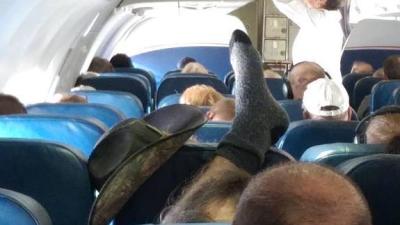The unruly passenger crisis endangers all passengers on board and can result in costly flight diversions. While the number of incidents have decreased slightly, severe offenses are becoming more prevalent.
The International Air Transport Association (IATA) reported on the state of the unruly passenger crisis during the IATA Media Day event in Geneva this week. Tim Coleman, IATA"™s assistant director, External Affairs, shared the most recent statistics from IATA"™s 2016 Safety Trend Evaluation, Analysis and Data Exchange System (STEADES), which includes reporting from 190 participating airlines.
There were over 58,000 unruly passenger incidents on record from 2007-2016, across all four levels of disruption, categorized by IATA as Level 1-4, which range from failure to comply with safety procedures and crew requirements as level one offense, to an attack on the flight deck as a level four offense. Because the statistics come from only those airlines which participate in STEADES, Coleman said incidents may actually be underreported.
The rate of incidents in 2016 decreased, compared to 2015, with one incident for every 1,434 flights in 2016 versus one in every 1,205 flights during 2015. However, Level 2 incidents "“ which include physical assault, obscene behavior, verbal threats, harassment, or tampering with emergency or safety systems onboard "“ increased from 11% of total unruly incidents in 2015, to 12% in 2016.
"In the confines of an aircraft, [Level 2 incidents] are difficult to manage," Coleman said. "Fortunately, the vast majority of incidents were Level 1 incident"¦the good news is that many of these incidents can be managed to a satisfactory conclusion by the cabin crew using de-escalation techniques."
There was also an increase in the number of unruly passenger incidents where all forms of de-escalation techniques failed, resulting in a need to physically restrain passengers. During 2016, there were 169 of these cases reported, compared to 113 in 2015…



